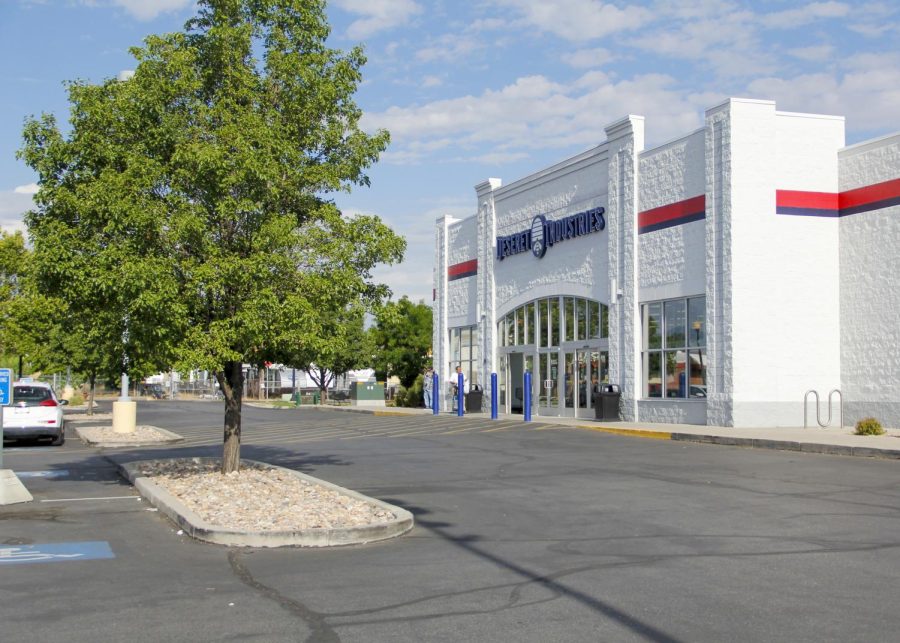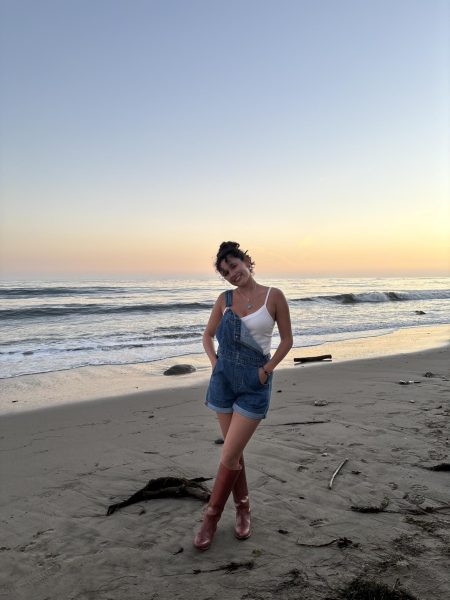This article was originally published in the Outdoors print issue of The Daily Utah Chronicle, originally in stands on September 23, 2024. It has not been updated and some information may be out of date.
Jorts, long jean shorts that look like they’ll fall off the waist any second, are not only a trendy fashion element but also representative of thrift culture. If you’ve noticed a common theme on campus of thrifted and vintage clothing, you’re not the only one. Salt Lake City has a plethora of secondhand clothing stores and markets, including Vantage, Sum Ol’ Market, Pib’s Exchange and Uncommon.
Joining the thrift scene in 2016, Isaac Bruce, owner of Salt Lake City Vintage and now lead auditor at IDFL Laboratory and Institute. As lead auditor, Bruce ensures clothing companies are meeting industry standards under IDFL, which provides quality assurance in the textile industry. Bruce answered my questions about thrifting in Salt Lake and how it has infiltrated the lifestyle of Salt Lakers.
SLC Thrift Boom
During the pandemic, people had to pick up a variety of hobbies, such as hiking and reading. However, many Salt Lakers took to the Goodwill bins to fill their time. Bruce witnessed this great migration to the bins back in 2020.
“All of a sudden everyone was there,” he said. “During the pandemic times there were actually a lot of news crews that came [to the] Salt Lake City bins to film news stories about it.”
Although Goodwill bins are not singular to Salt Lake City, Bruce explained why they seem to stand out compared to other locations.
“The Salt Lake City outlet pulls clothes from Montana, Wyoming, Idaho and Utah, in comparison to the ones in L.A. and Colorado that are just pulling from those stores around the outlets,” said Bruce.
Resellers Aren’t Really Scamming You
While some critique secondhand fashion resellers as taking away from people who want to buy more affordable clothes, Bruce doesn’t see it that way.
“There’s so many items of clothes that are going to end up heading to a landfill regardless,” he said.
If you’re worried about resellers “stealing” from shoppers, don’t worry. Goodwill reported 5.7 billion pounds of donations in 2021 and U.S. landfills see about 11.3 million tons of textile waste thrown away yearly. Resellers aren’t stealing clothes, but critics still find fault in their chosen pricing.
“People think that the value of a $20-$40 used t-shirt is crazy, but if it’s something that speaks to you, the value proposition is always there to say ‘I could spend that today on this item,’” Bruce said.
Examples of trends that have come in and out of the thrifting trend cycle are camouflage hoodies, jorts and vintage graphic tees.
Sustainability or Subscription
The foundation of thrifting was intended to be for the planet but has blossomed into a new age of vintage, secondhand stores, Depop sellers and even pop-up thrift events on our University of Utah campus. The thrifty, indie, Utah vibe has even become a TikTok phenomenon, displaying “Utah boy” fit checks. It appears as though you can’t get outfit details from anyone anymore without a blank statement of “It’s thrifted” in response.
“The sustainability aspect is definitely there for a lot of people, the trend aspect of it is what has become more prevalent recently,” he said about the thrift shift from sustainability to a subscription to what’s considered cool. “You see people on the internet wearing specific styles and it’s become more of a follower aspect.”
This social media effect has created a sort of cultural following, particularly in Salt Lake City, where the thrifty ski bum might as well be trademarked.
Whether sustainability or status quo, ways to reduce clothing waste are always a top priority.
“Find your personal style, find things that you are going to buy that are going to stay in your closet forever,” Bruce said.
If you’ve ever noticed that old jeans last the test of time, there is a reason for that.
“Clothes that were made prior to 2000, or what people consider ‘vintage’ … they were made with a different quality,” Bruce said. “A lot of things were made in the United States, and were made with a lot more thought.”
With this shift from eco-friendly to TikTok trendy fashion, it’s important to keep in mind the original intention behind buying secondhand clothing.




